Bighorn Medicine Wheel: Sacred Site And Ancient Solar Observatory
A. Sutherland - AncientPages.com - Bighorn Medicine Wheel in a sacred ancient site located on top of the Bighorn Range in Wyoming, USA.
Although the Bighorn Medicine Wheel was constructed by Plain Indian only 300-800 years ago, the wheel is part of a much larger complex of interrelated archeological sites that represent 7000 years of Native American adaptation to and use of the alpine landscape that surrounds Medicine Mountain.
The Bighorn Medicine Wheel has always been of great astronomical significance due to its alignments with the stars. It has also been used by Native American Indians for sacred rituals.
How and why the Bighorn Medicine Wheel was constructed is not entirely clear. According to one creation story, the wheel shares a special bond with a boy named Burnt Face.
When the boy was only a baby, he fell into a fire and was severely scarred. When the boy was 10 years old, he went on a vision quest in the mountains. He stayed there for some time and fastened. The creation story tells that during his vision quest, he helped to chase away an animal that attacked eaglets. An adult eagle returned the favor by carrying the boy away. As a miracle, the boy’s face was smooth again.
Native American Indians have used the Bighorn Medicine Wheel for fasting and vision quests for centuries. The place was also used for prayers and healing.
The 75 feet diameter wheel is also proof of our ancestors’ knowledge and interest in astronomy.
In the 1970s, archaeoastronomer John Eddy noticed that some of the wheel's spokes pinpoint the direction of the sunrise on different solstices, and other spokes mark the rising point of other stars, suggesting the site may have once been an observatory.
At the center of the Bighorn Medicine Wheel is a doughnut-shaped pile of stones, a cairn, connected to the rim by 28 spoke-like lines of stones.
Six more stone cairns are arranged around the wheel. Most of them are large enough to hold a sitting human.
Examination of the ancient wheel revealed that a person sits at cairn looking towards another, then he or she will be pointed to certain places on the distant horizon. These points indicate where the Sun rises or sets on the summer solstice and where certain important stars rise heliacally, that is, first rise at dawn after being behind the Sun. The dawn stars helped foretell when the Sun ceremonial days would be coming. The area is free of snow only for 2 months, around the summer solstice.
See also:
Is The Poverty Point Octagon World’s Largest Ancient Solstice Marker?
Dighton Rock – Centuries-Old-Mystery Still Unsolved
John Eddy became intrigued by this very special place and discovered wheel’s arrangements point to the rising and setting places of the Sun at the summer solstice, as well as the rising places of Aldebaran in Taurus, Rigel in Orion, and Sirius in Canis Major. These are bright, important stars associated with the Solstice.
Later another astronomer, Jack Robinson, found a cairn pair that marked the bright star Fomalhaut's rising point with the Sun 28 days before the solstice.
There are many ancient sites in North America that might have served as ancient astronomical observatories, like for example the Poverty Point Octagon that some consider to the world’s largest ancient solstice marker.
It is also very possible that the Bighorn Medicine Wheel was once an ancient astronomical observatory.
Written by – A. Sutherland - AncientPages.com Senior Staff Writer
Copyright © AncientPages.com All rights reserved. This material may not be published, broadcast, rewritten or redistributed in whole or part without the express written permission of AncientPages.com
More From Ancient Pages
-
 Dearg-Due Frightening Female Demon And Tyrannical Abhartach Of Irish Folklore
Celtic Mythology | Jan 5, 2017
Dearg-Due Frightening Female Demon And Tyrannical Abhartach Of Irish Folklore
Celtic Mythology | Jan 5, 2017 -
 Oldest Door Lock Comes From Ancient Egypt
Ancient History Facts | Jun 27, 2018
Oldest Door Lock Comes From Ancient Egypt
Ancient History Facts | Jun 27, 2018 -
 Siege Of Masada – The Last Stand Against The Roman Empire
Civilizations | Mar 27, 2017
Siege Of Masada – The Last Stand Against The Roman Empire
Civilizations | Mar 27, 2017 -
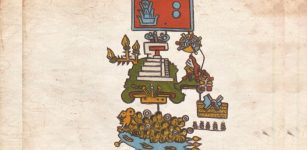 Pictograms: First Written Accounts Of Earthquakes In Pre-Hispanic Mexico
Archaeology | Aug 27, 2021
Pictograms: First Written Accounts Of Earthquakes In Pre-Hispanic Mexico
Archaeology | Aug 27, 2021 -
 Why Is A Biscuit Named After Giuseppe Garibaldi – Italy’s Military Leader And Hero?
Ancient History Facts | Feb 19, 2017
Why Is A Biscuit Named After Giuseppe Garibaldi – Italy’s Military Leader And Hero?
Ancient History Facts | Feb 19, 2017 -
 Evidence Europeans Started Using Milk 7,400 Years Ago – New Study
Archaeology | Oct 18, 2022
Evidence Europeans Started Using Milk 7,400 Years Ago – New Study
Archaeology | Oct 18, 2022 -
 Mysterious And Magnificent Pasha Gardens Built For Unknown Reasons
Featured Stories | Oct 8, 2018
Mysterious And Magnificent Pasha Gardens Built For Unknown Reasons
Featured Stories | Oct 8, 2018 -
 China’s Ancient Water Pipes Show People Mastered Complex Engineering Without The Need For A Centralized State Authority
Archaeology | Aug 15, 2023
China’s Ancient Water Pipes Show People Mastered Complex Engineering Without The Need For A Centralized State Authority
Archaeology | Aug 15, 2023 -
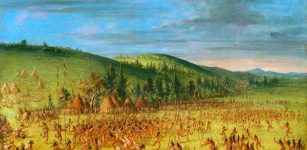 Lacrosse Was Invented By Native American Indians
Ancient History Facts | May 1, 2016
Lacrosse Was Invented By Native American Indians
Ancient History Facts | May 1, 2016 -
 On This Day In History: Gutenberg Prints The First Bible – On Feb 23, 1455
News | Feb 23, 2017
On This Day In History: Gutenberg Prints The First Bible – On Feb 23, 1455
News | Feb 23, 2017 -
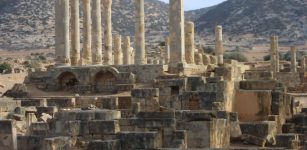 University Of Warsaw Archaeologists Return To Study Large Ancient City Of Ptolemais
Archaeology | Sep 8, 2023
University Of Warsaw Archaeologists Return To Study Large Ancient City Of Ptolemais
Archaeology | Sep 8, 2023 -
 Secrets Of The Lost Tomb X – Enigmatic Boxes And Unusual Samples – Part 2
Ancient Mysteries | Apr 12, 2019
Secrets Of The Lost Tomb X – Enigmatic Boxes And Unusual Samples – Part 2
Ancient Mysteries | Apr 12, 2019 -
 Burnt Mound Complex Dated To Bronze Age – Uncovered At Suffolk Site
Archaeology | Jun 19, 2023
Burnt Mound Complex Dated To Bronze Age – Uncovered At Suffolk Site
Archaeology | Jun 19, 2023 -
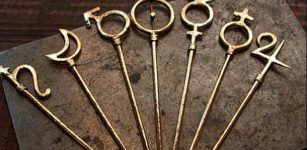 Number ‘Seven’: Mystical Number Of The Universe And One Of The Most Sacred Numbers
Ancient Symbols | Feb 14, 2017
Number ‘Seven’: Mystical Number Of The Universe And One Of The Most Sacred Numbers
Ancient Symbols | Feb 14, 2017 -
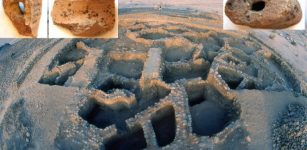 Magnetic Field From 9,000 Years Ago Teach Us About The Magnetic Field Today
Archaeology | Aug 17, 2021
Magnetic Field From 9,000 Years Ago Teach Us About The Magnetic Field Today
Archaeology | Aug 17, 2021 -
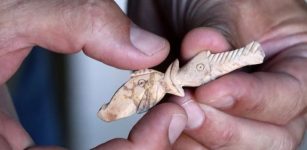 2500-Year-Old Objects Made From Goat Bones Discovered In Turkey’s City Of Aigai
Archaeology | Sep 17, 2020
2500-Year-Old Objects Made From Goat Bones Discovered In Turkey’s City Of Aigai
Archaeology | Sep 17, 2020 -
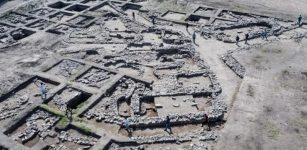 Incredible 5,000-Year-Old New-York-Like Metropolis Discovered In Israel
Archaeology | Oct 9, 2019
Incredible 5,000-Year-Old New-York-Like Metropolis Discovered In Israel
Archaeology | Oct 9, 2019 -
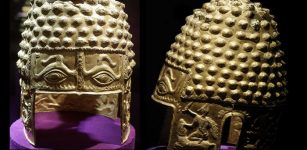 Ancient Dacian Gold Helmet With Piercing Evil Eyes
Artifacts | Jan 4, 2019
Ancient Dacian Gold Helmet With Piercing Evil Eyes
Artifacts | Jan 4, 2019 -
 Underground Civilizations – True Rulers Of Earth – Part 1
Ancient Mysteries | May 7, 2019
Underground Civilizations – True Rulers Of Earth – Part 1
Ancient Mysteries | May 7, 2019 -
 Ymir – Primordial Norse Giant Whose Body Parts Formed The World
Myths & Legends | Apr 5, 2018
Ymir – Primordial Norse Giant Whose Body Parts Formed The World
Myths & Legends | Apr 5, 2018



